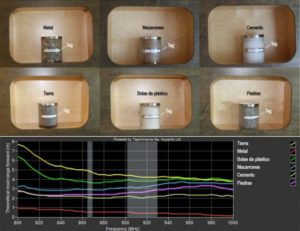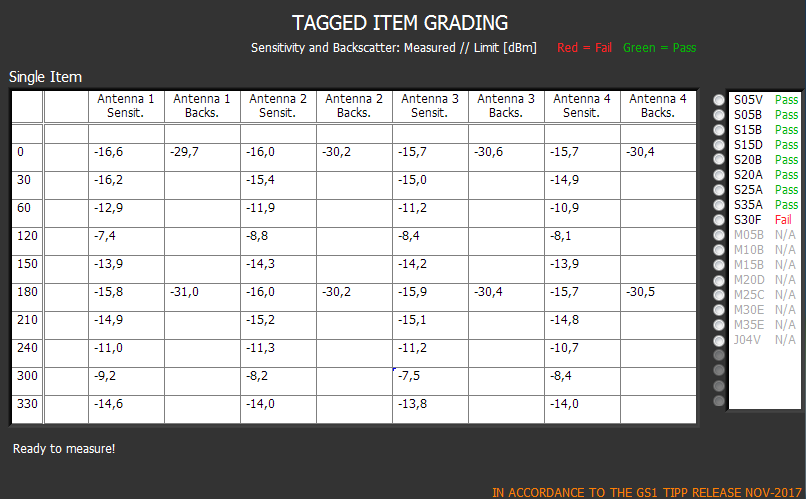RFID tags comparison and analysis
How to know if a RFID tag is better than other for a specific situation?



Using the «take the tag and go away» method to measure the distance with a reader is not precise. It is totally dependent on the environment and the RFID reader used, which is why only a professional RFID equipment can reliably compare and measure rfid tags.
Tag analysis can range from basic parameter comparisons to an exhaustive evaluation of a tag’s performance when it is fixed on different materials and when there are other tags around.
The European RFID Performance Test Center offers all the services you need to measure your tags
RFID MATERIAL TESTING

You probably know that some RFID tags don’t behave well on liquids or metals… but did you know that some of the most common materials on which they are attached also affect their performance? Cardboard, plastic, wood… even if the plastic is PVC or PTFE makes the tag behave better or worse! The materials also affect differently depending on the frequency band (ETSI, FCC), and with these tests we can even detect if metal tags would work well or not on non-metallic surfaces.
RFID ROTATION DIAGRAM

Orientation (not just polarization) also makes the difference between a good tag and a low performance tag. That’s why an orientation test is included in this service, measuring threshold power, sensitivity, backscatter and all tag parameters, in 360º.
TIPP TEST

The Tagged-Item Performance Protocol (TIPP) provides a standardized way to measure and verify the performance of a tagged item that can be referenced by every one and verified independently by retailers, suppliers or 3rd party.
TAG READING DISTANCE

From this analysis we will extract all the details of your tags, but what you will finally want to know and compare is «What is the reading distance of each one?» Of course, we also provide you with this information, for given system parameters (transmission power of the reader, antenna gain, sensitivity of the reader). You will quickly know how your tags work in the field, in the real world, with your own readers or even which readers you have not yet purchased.
RFID TAG GROUPING

Analyzing tag groupings is probably the most interesting test of all. We know that one tag can affect another when placed very close together, but how is this reflected in reading distance, sensitivity or backscatter power? Are there models of chips or tags that compare better with hundreds of tags around? Does grouping affect performance even if you only want to read a particular tag? Is there an optimal reader transmission power to make an inventory of 100% of the tags, rather than using the maximum power available?